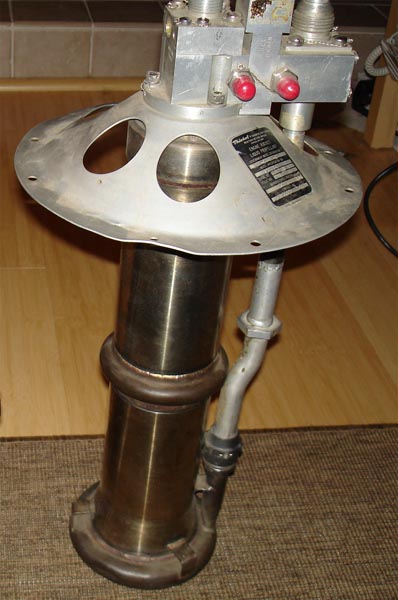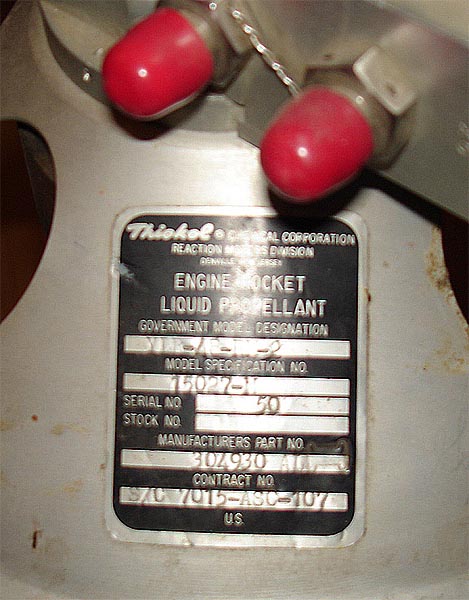Has any one seen this engine?
No, it's not missing. We just can't find out what it is other than a YLR-48.
If anyone recognizes it, please let me know. Thanks


Thanks to Vincent Granato for providing this information . . . . .
RMI-RMD's Corvus and Condor involvements were brief. In 1957, the Navy
Awarded Temco Aircraft Corporation of Dallas, Texas, the contract for the
longrange Corvus XASM-N-8 air-to-surface which was to fly from Navy to Marine
Corps carrier-borne aircraft against enemy surface ships or major tactical land
targets 75-100 miles (120-160 km) distance. Temco chose RMI (soon to become
RMD) as the engine developer, though initial versions of Corvus were apparently
fitted with solid motors for aerodynamic and structural tests. For long-term storage
aboard ships, RMI designed a rugged, lightweight, storable but packaged liquid
propellant system called XLR-48-RM-2, or Patriot. The propellants were completely
storable, high-impulse inhibited red fuming nitric acid (IRFNA) and mixed
amine fuel (MAP-i), a hypergolic combination. A small turbopump driven by a
self-fed gas generator also using IRFNA and MAF-1 forced in the propellants to
the regeneratively-cooled chamber. The pump was activated by a solid-propellant
(HDAH) starting cartridge. Patriot's thrust was 1,030 lb (458 N) for 177 seconds
(three minutes) over an extremely stable burning curve suitable for Corvus' cruising
mission. Overall length of this compact engine was 38 in. (96.5 cm), maximum
diameter 8.7 in. (22.2 cm), while the principal diameter (chamber) was 5.4 in. (13.7
cm). The overall dry weight was 38.2 lb (17.3 kg). James W. Fitzgerald, who
instituted the tradition of assigning names as well as numerical designations to RMI
engines, was the Corvus powerplant program manager. A test missile was successfully
fired from a Douglas A4D at the Pacific Missile Range on July 18, 1959.
Nonetheless, exactly one year later, when $80 million had been expended on the
project, Corvus was canceled for then secret reasons. Afterwards, it was disclosed
that Corvus was more limited in scope than newer, upcoming Navy missiles.




